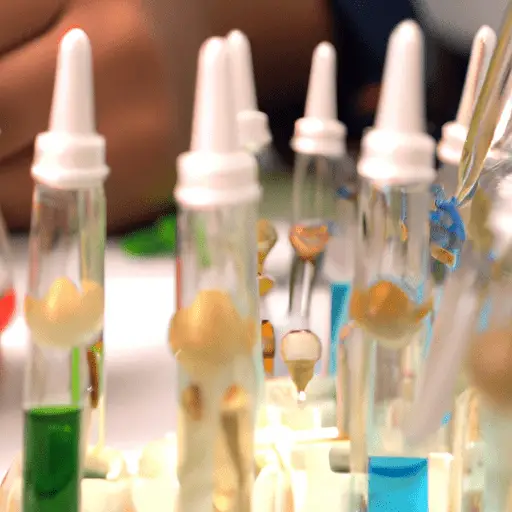The Effectiveness of PRP: Fact or Fiction?
-
Table of Contents
- The Effectiveness of PRP: Fact or Fiction?
- Key Takeaways
- Unraveling the Mystery of PRP Therapy
- The Science Behind PRP Therapy
- What Does the Research Say?
- Is PRP Therapy Safe?
- FAQ Section
- What conditions can PRP therapy treat?
- How is PRP therapy performed?
- Is PRP therapy effective?
- What are the potential side effects of PRP therapy?
- Is PRP therapy covered by insurance?
- Conclusion: The Verdict on PRP Therapy
- Further Analysis
- Key Takeaways Revisited
The Effectiveness of PRP: Fact or Fiction?

[youtubomatic_search]
Key Takeaways
- Platelet-Rich Plasma (PRP) therapy is a promising treatment for various medical conditions, including orthopedic injuries, hair loss, and skin rejuvenation.
- PRP therapy involves injecting a patient’s own concentrated platelets into the affected area to promote healing.
- Several studies have shown positive results of PRP therapy, but the effectiveness varies depending on the condition being treated.
- Despite the promising results, more high-quality, randomized controlled trials are needed to establish the efficacy and safety of PRP therapy.
- PRP therapy is generally safe, but potential side effects include infection, nerve injuries, and pain at the injection site.
Unraveling the Mystery of PRP Therapy
Platelet-Rich Plasma (PRP) therapy has been making waves in the medical field for its potential to treat a wide range of conditions. From sports injuries to hair loss and skin rejuvenation, PRP therapy is touted as a revolutionary treatment. But is the effectiveness of PRP fact or fiction? This article delves into the science behind PRP therapy, its potential benefits, and the current state of research.
The Science Behind PRP Therapy
PRP therapy involves extracting a patient’s own blood, processing it to concentrate the platelets, and then injecting it into the affected area. Platelets are cells in the blood that help with clotting and contain growth factors that can promote healing. The idea is that by injecting a high concentration of these growth factors into the damaged area, it can stimulate the body’s natural healing process.
What Does the Research Say?
Several studies have shown promising results of PRP therapy. For instance, a study published in the American Journal of Sports Medicine found that PRP injections improved pain and function in patients with chronic Achilles tendinopathy. Another study in the Journal of Cutaneous and Aesthetic Surgery reported that PRP therapy was effective in treating hair loss.
However, the effectiveness of PRP therapy seems to vary depending on the condition being treated. A systematic review in the British Journal of Sports Medicine concluded that PRP therapy had no significant effect on muscle injuries. Similarly, a study in the Journal of the American Academy of Dermatology found that PRP therapy had limited effectiveness in treating acne scars.
Despite these mixed results, it’s important to note that many of the studies have limitations, such as small sample sizes and lack of control groups. Therefore, more high-quality, randomized controlled trials are needed to establish the efficacy and safety of PRP therapy.
Is PRP Therapy Safe?
PRP therapy is generally considered safe since it uses the patient’s own blood, reducing the risk of allergic reactions or disease transmission. However, as with any injection procedure, there are potential risks, including infection, nerve injuries, and pain at the injection site. It’s also worth noting that PRP therapy is not covered by most insurance companies, as it is often considered experimental.
FAQ Section
What conditions can PRP therapy treat?
PRP therapy has been used to treat a variety of conditions, including orthopedic injuries, hair loss, and skin conditions such as wrinkles and acne scars.
How is PRP therapy performed?
PRP therapy involves drawing a patient’s blood, processing it to concentrate the platelets, and then injecting it into the affected area.
Is PRP therapy effective?
Several studies have shown promising results of PRP therapy, but the effectiveness varies depending on the condition being treated. More high-quality research is needed to establish its efficacy and safety.
What are the potential side effects of PRP therapy?
Potential side effects include infection, nerve injuries, and pain at the injection site.
Is PRP therapy covered by insurance?
Most insurance companies do not cover PRP therapy as it is often considered experimental.
Conclusion: The Verdict on PRP Therapy
PRP therapy is a promising treatment for various medical conditions, but the current state of research presents a mixed picture. While some studies have shown positive results, others have found limited effectiveness. Furthermore, more high-quality, randomized controlled trials are needed to establish the efficacy and safety of PRP therapy. As with any medical treatment, it’s important for patients to discuss the potential benefits and risks with their healthcare provider.
[youtubomatic_search]
Further Analysis
In conclusion, the effectiveness of PRP therapy is not a clear-cut fact or fiction. It’s a promising treatment with potential benefits, but more research is needed to fully understand its effectiveness and safety. As the field of regenerative medicine continues to evolve, PRP therapy may become a more established treatment option for various medical conditions.
Key Takeaways Revisited
- PRP therapy is a promising treatment for various medical conditions, but more research is needed to establish its efficacy and safety.
- The therapy involves injecting a patient’s own concentrated platelets into the affected area to promote healing.
- Several studies have shown positive results, but the effectiveness varies depending on the condition being treated.
- PRP therapy is generally safe, but potential side effects include infection, nerve injuries, and pain at the injection site.
- Most insurance companies do not cover PRP therapy as it is often considered experimental.


